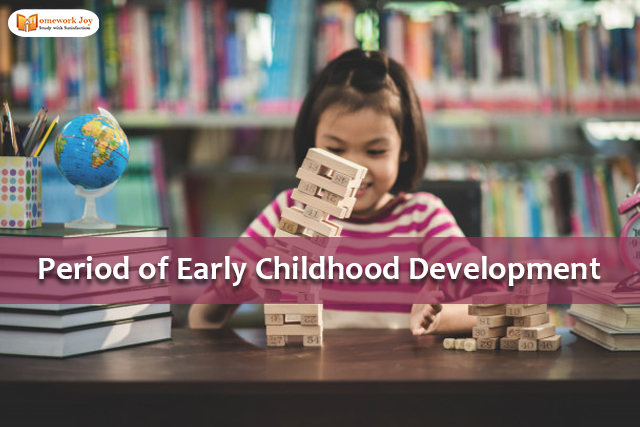Early childhood development starts from the age of 2 years up to 8 years. It is marked by a tremendous period of growth and development. At this stage, children are highly influenced by heredity and environment. Early childhood aims at the holistic development of a child’s social, emotional, physical, and cognitive skills.
Early childhood, middle childhood, and adolescence represent three stages of development.
Characteristics of Early Childhood Development
According to psychologists, every stage of development is essential. At this stage, the child is dependent on their parents. Some of the characteristics of the early childhood stage are:
Cooing and babbling
Early childhood development begins from cooing and babbling. It means that the child starts speaking through sounds and short words like “mom,” “dad,” “bro,” etc. Later they began to use and combine words and form sentences. For example, Mom, I’m going to play in a garden.
Walking
Walking is an essential characteristic In the early childhood development of a child. A child starts first by crawling on the knees and then by standing on the tippy toes and climbing.
Toilet training
Early childhood is a stage where children are given toilet training. During (0-2 years), children are not able to identify how to control their urge to go the loo. But in later years, children are taught to indicate before going to the bathroom and how to manage their urges.
Insecurity
Children at early childhood development stage stars having a feeling of insecurity. Most of them don’t share their toys with anyone and want their parent’s attention continuously towards them.
Memory
Memory starts developing in children. Children start remembering objects and poems in their minds. Although their memory span is limited, children still start recognizing objects around them and body parts as well.
Curiosity
Curiosity is one of the characteristics of early childhood development. The pre-school children usually ask questions like “why,” “how,” “what,” “where,” etc.
Principles of Child Development
They are some of the principles of child development. The principles are established based on all aspects of development, including physical, emotional, sensory-motor, cognitive, mental, etc.
Development proceeds from simple to complex
Development proceeds from simple to complex, which means development starts from the development of sensory organs and later proceeds to hands and legs.
Development proceeds from general to specific
The principle of early childhood development continues from general to particular. A child learns general behavior and proceeds towards learning specific behavior. A child learns general words then proceeds to learn specific terms.
Principle of directional development
There are two types of directional development:
- Cephalocaudal development: This type of directional development proceeds from head to toe
- Proximodistal development: This type of directional development proceeds from the center of the body to other parts of the body
Principle of heredity and environment
Childhood, including early childhood development, is influenced by heredity and environment. Heredity refers to the genes of the parents. Environment refers to the natural and artificial surroundings that influence a child’s development. Heredity and environment play a significant role, which shapes the children’s image.
Principle of continuity
It states that development continues throughout life. The pace of development might be different for different people, but it continues throughout a human’s life and is a lifelong process.
Principle of uniformity
Development is uniform in all people. For example, language development occurs within a particular definite sequence in all children irrespective of the place. Therefore development occurs in a distinct pattern.
Principle of total development
Human development occurs as a whole. The development of an individual takes place simultaneously with the social, emotional, mental, and physical aspects of the human personality.
Principle of growth and development in males and females
The rate of growth and development occurs at a different pace in males and females. For example, females occur in the adolescent stage faster than males.
Education in Early Childhood Stage of Development
Early childhood development in a child is essential, as well as a crucial stage. At this stage, all aspects of development coincide. It is the best period for learning. The form of education for a child should be as under:
Good examples
Parents should present good examples to children as children tend to imitate their parents. For them, parents are their ideal.
Activities
In the early childhood development of a child, activities play an essential role. It is because a child learns about movements, shapes, and colors through activities.
Mother tongue
Children use more words in speaking. They should be taught in the mother tongue. Later they should be taught other languages.
Therefore, the early childhood development of a child is a critical stage. Parents and teachers should provide an education that will lead to the child’s overall development.
